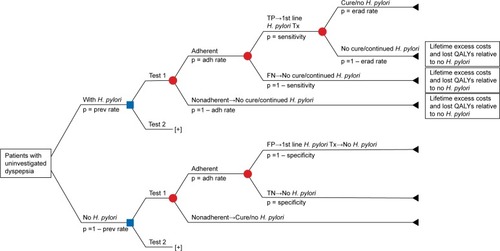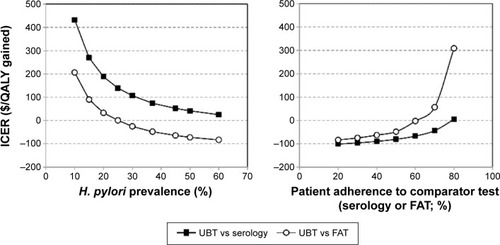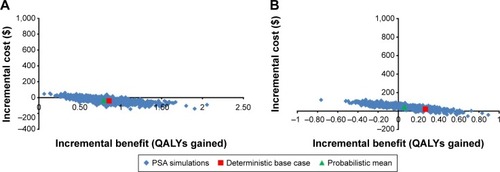Figures & data
Figure 1 Decision-tree model.

Table 1 Population characteristics, treatment attributes, and data for diseases related to Helicobacter pylori infection
Table 2 Test characteristics
Table 3 Base-case economic and health outcomes
Figure 2 Effect of adherence and prevalence.

Figure 3 Cost-effectiveness scatterplots for comparisons of urea breath test with (A) monoclonal fecal antigen test and (B) serology.

Table S1 Estimation of excess lifetime costs associated with peptic ulcer disease
